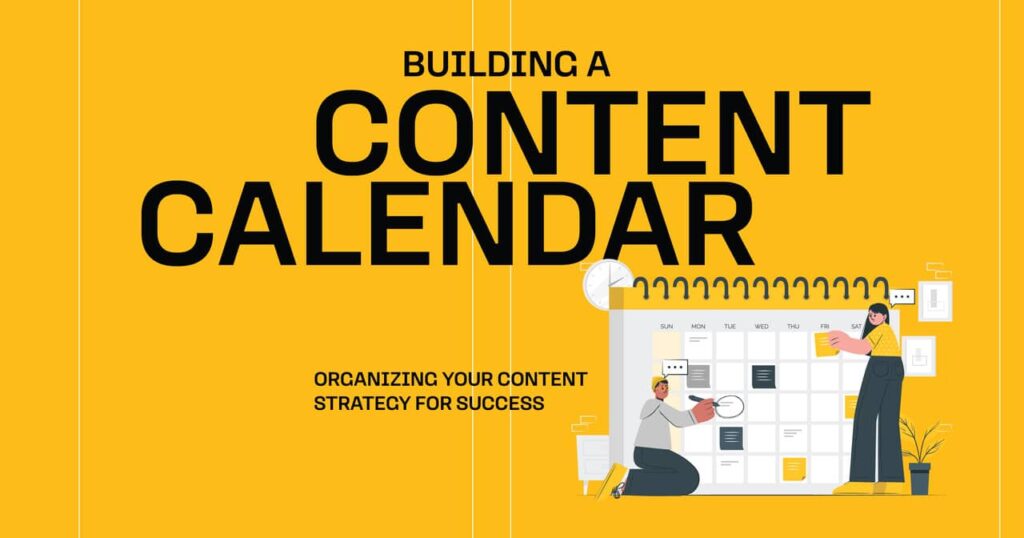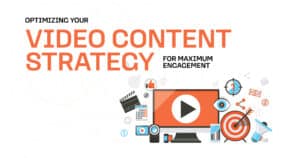Creating a Content Calendar: A Strategic Move for Your Marketing Efforts
Creating a content calendar might sound like a mundane task, but it’s one of the most strategic moves you can make to drive your content marketing efforts. Whether you’re a seasoned marketer or just starting, a well-organized content calendar can be a game-changer for your brand.
Essential Takeaways
- Plan Ahead for Consistency: A content calendar helps you stay organized and ensures timely, relevant, and consistent content delivery, which keeps your audience engaged and supports your brand objectives. (content goals, content production)
- Stay Flexible: While a content calendar provides structure, adapt to changes by regularly updating it based on new trends, feedback, and unexpected developments.
- Align with SEO: Integrate SEO best practices into your content calendar by incorporating keyword research and optimization strategies to boost content visibility and effectiveness. (SEO strategy, evergreen content)
Let’s dive into how you can build an effective content calendar, optimize your strategy, and set your brand up for success.

Why a Content Calendar is Essential
The Importance of Planning Your Content
In the fast-paced world of digital marketing, it’s easy to get caught up in the whirlwind of daily tasks. But, without a plan, you might find yourself scrambling to create content at the last minute, which can lead to rushed, lower-quality outputs. A content calendar helps you stay ahead by providing a structured approach to planning and scheduling your content. It ensures that you have a roadmap for your content, allowing you to be more strategic and intentional in your efforts.
How a Content Calendar Can Drive Success
A well-crafted content calendar is like having a GPS for your content strategy. It helps you map out your content themes, topics, and deadlines in advance, aligning your efforts with your business goals and audience needs. By planning ahead, you can ensure that your content is timely, relevant, and consistent, which is crucial for building and maintaining audience engagement. (content strategy, content in advance)
Understanding Content Calendars
What is a Content Calendar?
A content calendar is a tool that helps you plan, organize, and schedule your content marketing activities. It outlines what content will be published, when it will be published, and where it will be distributed. This helps ensure consistency, relevance, and timely delivery of content. (types of content, basic content calendar)
Types of content can include blog posts, social media posts, and more. Content calendars can take various forms, including digital tools like Google Calendar, Trello, or dedicated content management systems, as well as traditional spreadsheets. (Google Sheets, editorial calendar template)
Types of Content Calendars
- Digital Content Calendars: These are often integrated with project management tools like Asana, Trello, or Monday.com, offering collaborative features and real-time updates.
- Print Content Calendars: Traditional paper calendars can be used for a tactile approach, though they may lack the flexibility and ease of digital tools.
- Hybrid Calendars: Combining digital and print elements, hybrid calendars offer a blend of both approaches, providing a physical reference while leveraging digital tools for scheduling and tracking. (social media calendar tools)
Creating Your Content Calendar
Steps to Build an Effective Content Calendar
Define Your Goals and Objectives
Before you start filling in dates and topics, it’s crucial to define what you want to achieve with your content. Are you aiming to increase brand awareness, drive more traffic to your site, or boost engagement on social media? Setting clear goals will guide your content planning and help you measure success. (marketing goals, content strategy goals)
Identify Your Target Audience
Understanding your audience is key to creating relevant and engaging content. Research their preferences, needs, and pain points to tailor your content to what they’re looking for. This will ensure that your content resonates with them and encourages interaction. (target audience, audience engagement)
Choose the Right Tools and Platforms
Select tools that fit your needs and preferences. Digital content calendars like Google Calendar, Trello, or CoSchedule offer various features for scheduling, collaboration, and tracking. If you prefer a more traditional approach, a well-organized spreadsheet can also do the job effectively. For instance, using Google Sheets can provide a clear overview of your publishing schedule. (Google Drive, marketing strategies)
Plan Your Content Topics and Themes
Brainstorm and plan content topics that align with your audience’s interests and your brand’s goals. Consider seasonal themes, industry trends, and relevant events to keep your content timely and engaging. Mapping out content topics in advance will help you maintain a consistent flow and avoid last-minute scrambles. (content ideas, content planning)
Setting Up Your Calendar
Selecting a Format
Your content calendar format should suit your workflow and team dynamics. Digital tools offer automation, reminders, and collaboration features, while spreadsheets provide a simple and customizable approach. Choose what works best for you and your marketing team. (content workflow, social media calendar template)
Establishing a Publishing Schedule
Decide on a posting frequency that aligns with your content goals and audience expectations. Whether it’s daily, weekly, or monthly, consistency is key. Include deadlines for content creation, review, and approval to keep your process on track. (posting frequency, publishing schedule)

Incorporating Key Dates and Events
Plan around key dates and events relevant to your industry or audience. This could include holidays, product launches, or other significant events. Integrating these dates into your content calendar helps you create timely and contextually relevant content. (product launches, company event)
Content Planning and Strategy
How to Plan Content for Maximum Impact
Brainstorming and Ideation
Start with brainstorming sessions to generate content ideas. Involve your team or use creative tools to spark inspiration. Aim for a mix of content types and formats to keep your audience engaged and interested. (content types, creative assets)
Researching and Mapping Out Topics
Conduct research to validate your content ideas. Use tools like Google Trends, BuzzSumo, or keyword research tools to identify popular topics and search trends. Mapping out your topics in advance ensures that your content is relevant and optimized for SEO. (content performance metrics, content topics)
Aligning Content with Your Brand and Goals
Ensure that your content aligns with your brand voice, messaging, and overall marketing goals. Consistency in tone and style helps reinforce your brand identity and makes your content more recognizable and memorable. (consistent posting schedule, high-quality content)
Content Types and Formats
Blog Posts, Articles, and Whitepapers
These long-form content types are excellent for in-depth analysis, thought leadership, and SEO. Plan a mix of informative, educational, and engaging content to cater to different audience preferences. (educational content, blog content calendar)
Social Media Posts and Campaigns
Social media content should be engaging, shareable, and aligned with your brand’s voice. Plan for a mix of posts, including promotional content, industry updates, and interactive elements like polls or Q&A sessions. Utilize a social media calendar to schedule posts in advance, helping your social media manager keep track of all social media marketing campaigns. (social media strategy, social media management tool)
Videos, Infographics, and Other Multimedia
Incorporate multimedia content to appeal to different learning styles and increase engagement. Videos, infographics, and interactive content can enhance your content strategy and provide valuable visual elements for your audience. (content assets, online content)
Managing and Maintaining Your Calendar
Regular Review and Adjustment
Regularly review your content calendar to ensure it remains aligned with your goals and audience needs. Make adjustments as necessary based on performance metrics, feedback, or changes in industry trends. (content audit, content performance metrics)
Handling Changes and Last-Minute Updates
Flexibility is crucial when managing a content calendar. Be prepared to make last-minute updates or adjustments to accommodate unexpected changes or opportunities. Having a process in place for handling these changes will help you stay organized and responsive. (actual content creation, ongoing content initiatives)
Collaboration and Communication
Working with Your Team
Effective collaboration is key to a successful content calendar. Involve your entire team in the planning process, assign roles and responsibilities, and ensure clear communication throughout the content creation process. Using a social media content planner can help streamline this effort. (team collaboration, social media teams)
Assigning Tasks and Responsibilities
Clearly define who is responsible for each task, from content creation to approval and publishing. This helps streamline your workflow and ensures that everyone is on the same page. (content creation, team projects)
Tracking Progress and Deadlines
Monitor progress and deadlines to keep your content calendar on track. Use tools and features that allow you to track task completion, manage deadlines, and ensure timely delivery of content. (content scheduler, track posts)
Measuring Success and Making Improvements
Tracking Metrics and Performance
Measure the success of your content calendar by tracking relevant metrics, such as engagement, traffic, and conversions. Analyze these metrics to evaluate the effectiveness of your content strategy and identify areas for improvement. For example, focus on conversion rates and click-through rates to assess your content’s impact. (conversion rates, click-through rate)
Analyzing Results and Feedback
Gather feedback from your audience and team to gain insights into what’s working and what needs adjustment. Use this feedback to refine your content calendar and improve your content strategy. (campaign performance, audience with sharing schedule)
Iterating and Improving Your Strategy
Content marketing is an ongoing process. Use the insights gained from your metrics and feedback to iterate on your strategy and make improvements. Regularly revisiting and adjusting your content calendar ensures that you stay relevant and effective in your efforts. (iterative process, successful campaign)

Conclusion
Creating a content calendar is an essential component of a successful content marketing strategy. It not only helps you stay organized but also allows you to plan, execute, and measure your content efforts effectively. By following the steps outlined in this guide, you can create a comprehensive content calendar that aligns with your brand goals and engages your audience consistently.
Whether you’re focused on social media marketing or broader content strategies, a well-structured content calendar can be your roadmap to success. Start building your content calendar today, and watch your marketing efforts flourish!
Call to Action
Ready to take your content strategy to the next level? Start building your content calendar template today and watch your brand thrive. For more tips and resources, check out our [link to relevant resource or service]!
FAQs
- What is a content calendar?
A content calendar is a tool that helps you plan, organize, and schedule your content marketing activities. It outlines what content will be published, when it will be published, and where it will be distributed. This helps ensure consistency, relevance, and timely delivery of content. - How often should I update my content calendar?
Your content calendar should be updated regularly to reflect any changes in your strategy, audience needs, or industry trends. Typically, it’s a good idea to review and adjust your calendar monthly or quarterly, but be flexible to accommodate any urgent updates or changes. - What tools are best for managing a content calendar?
There are various tools available for managing content calendars, including Google Calendar, Trello, Asana, and CoSchedule. Each offers different features, so choose one that fits your needs for scheduling, collaboration, and tracking. - How can I ensure my content calendar aligns with my SEO strategy?
Integrate your SEO strategy into your content calendar by including keyword research, planned blog topics, and deadlines for optimizing content. Regularly review and adjust your calendar based on SEO performance metrics and keyword trends. - What should I include in my content calendar?
Your content calendar should include planned topics, publication dates, content formats, responsible team members, and any key dates or events relevant to your content. Also, track deadlines for content creation, review, and publishing to stay organized and on schedule.







